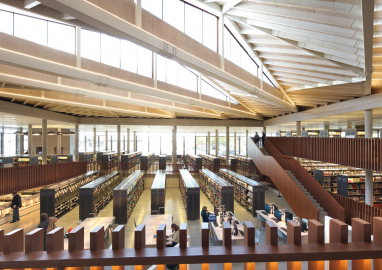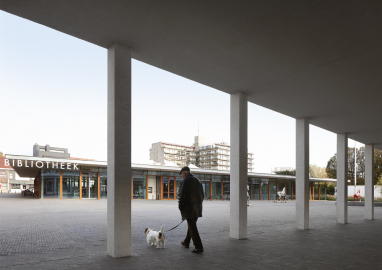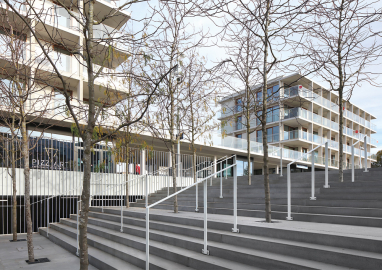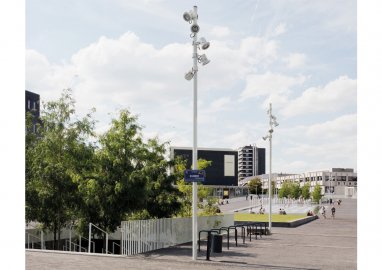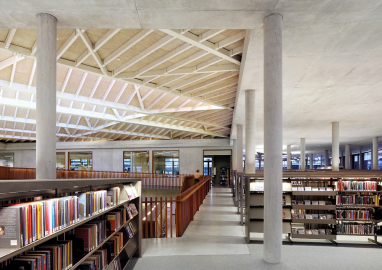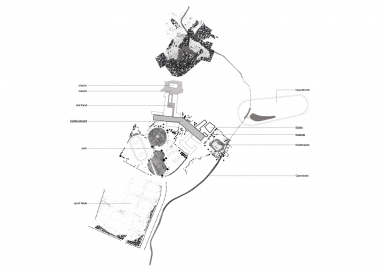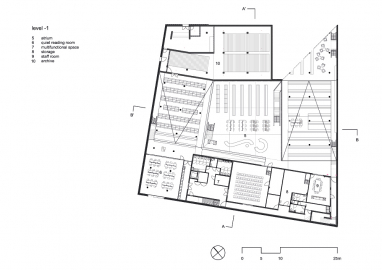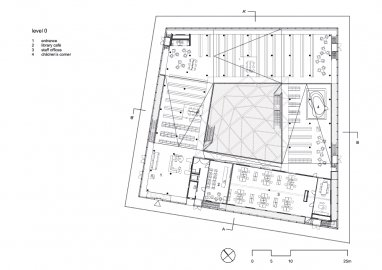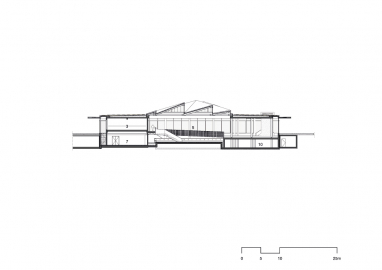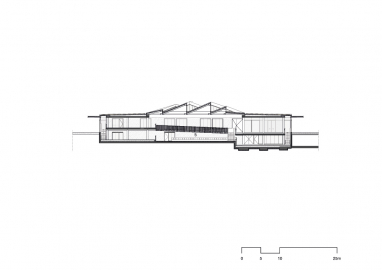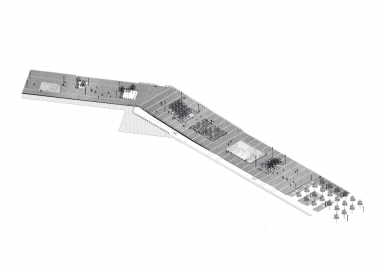Zuidboulevard and public library
Linking the new library with the existing town hall, Zuidboulevard gives a contemporary response to an urban planning scar. The glass façades of the library draw the urban life of the streets beyond inwards, while gentle slopes, formed as an inverted ziggurat, lead visitors to the heart of the building. An intimate landscape of books unfolds.
The new public library is part of the transformation of the southern side of the centre of Waregem. It belongs to a larger urban ensemble that also encompasses a square, three apartment blocks with retail premises on the ground floor, an urban boulevard and an underground car par that also links the town hall with the library.
The library’s low volume with its overhanging roof relates to the surrounding buildings and ring road. From the outside, the library appears to consist of a single storey, but inside it delves down by means of gently sloping plateaus to the level of the car park, which it literally touches. In this way, the layered design of the town hall and the boulevard extends into the library’s interior. Using the natural slope of the site, the car park is slid under the broad esplanade, connected by two substantial staircases functioning as light wells and planted with trees.
The public library is the cornerstone of a new development in the centre of Waregem and connects the ring road with the street leading directly to the city centre. The project was a partnership between a developer and the city government, the aim of which was to inject new dynamism into the city centre.
Positioned on a new square, the cantilevered roof of the library overhangs the public space, providing shelter and reinforcing its identity as a meeting place. A portico on the ground floor of a new housing block opposite connects both the housing and library to the new Zuidboulevard, which links to an existing theatre, a shopping centre and the city hall.
The library is a social space where people of all ages gather, read and study. Daily life is reflected discretely through the surrounding windows into the silent space of reading rooms and bookshelves.
The project succeeded in satisfying the needs of the inhabitants while simultaneously increasing the density of the quarter. In order to deliver a project of high architectural quality within a constrained budget, the architects designed an austere single storey building with a large component situated underground.
The esplanade and surrounding urban spaces are paved with concrete tiles. Birch trees and tall grasses define the landscape.
The library itself consists of a visible concrete structure for the floors, columns and ceilings, enveloped by a rigid wooden framework. Bookshelves function as acoustic buffers and incorporate lighting which illuminates the continuous ceilings of the space.
Daylight enters through both the panoramic envelope and the central sawtooth roof lights, which are integrated within a straightforward steel structure. These roof lights reference factory or shed typologies, and allow daylight to penetrate deep into the heart of the library.
(Parts are based on extracts from De Caigny, S. (2018). Flanders Architectural Review N°13: This Is a Mustard Factory)

